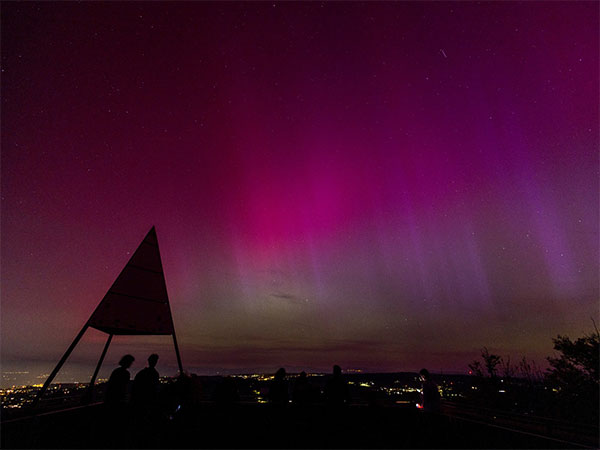Strongest solar storm in 20 years puts on a light show
May 11, 2024
Washington [US], May 11: The strongest solar storm in more than two decades struck Earth on Friday, triggering spectacular auroras worldwide.
According to the US National Oceanic and Atmospheric Administration's (NOAA) Space Weather Prediction Center, the first of several coronal mass ejections (CME) occurred shortly after 1600 GMT.
It was later upgraded to an "extreme" geomagnetic storm. It was the first such storm since the Halloween storms of October 2003, which caused blackouts in Sweden and damaged power infrastructure in South Africa.
The green and blue lights - which are expected to continue for a few days - were seen from Britain to Tasmania, with officials in the US saying sightings might be possible as far south as Alabama and Northern California.
Meanwhile, people from all over Germany posted photos of the aurora on social media. Scientists say the best views of the aurora may come from cell phone cameras, which are better at capturing light than the naked eye.
Each eruption, known as a CME, can contain billions of tons of plasma and magnetic field from the sun's outer atmosphere, or corona. More CMEs are expected to hit the planet in the coming days.
Unlike solar flares, which travel at the speed of light and take about eight minutes to reach Earth, CMEs travel at a more leisurely pace. Officials say the current average is 800 kilometers (500 miles) per second.
The CMEs come from a massive sunspot cluster that is 16 times larger than our planet. The sun is nearing the peak of an 11-year cycle that brings with it heightened levels of activity.
Authorities warned satellite operators, airlines and the power grid to take precautions in preparation for possible disruptions due to changes in the Earth's magnetic field.
How dangerous are geomagnetic storms?
Fluctuating magnetic fields associated with geomagnetic storms induce currents in long wires, including power lines. These currents can potentially cause power outages. Long pipelines can also become electrified, causing technical problems.
Spacecraft are also at risk from high doses of radiation. NASA said the storm posed no serious threat to the seven astronauts aboard the International Space Station. Its crew could move to a better-shielded part of the station if necessary
The atmosphere prevents this radiation from reaching the Earth.
Source: Times of Oman








